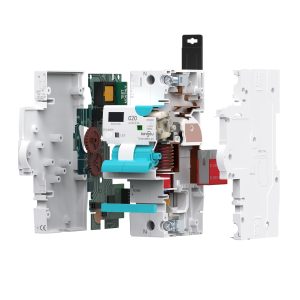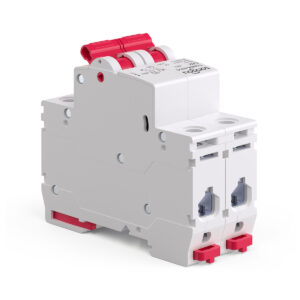
RCBO Trips at Night? Causes, Diagnosis, and Lasting Fixes
RCBO Trips at Night? Causes, Diagnosis, and Lasting Fixes Already know what an RCBO is? Great. This page skips the basics and focuses on nocturnal
In today’s technologically advanced world, relay modules play a pivotal role in various applications, from home automation to industrial machinery. But what exactly is a relay module, and why is it so crucial? This article delves deep into the meaning and function of relay modules, shedding light on their significance and varied uses.
A relay module is essentially a circuit board that houses one or more relays. These modules come in diverse shapes and sizes, with the most common configurations being rectangular boards containing 2, 4, or 8 relays. Each relay module is equipped with various components such as indicator LEDs, protection diodes, transistors, and resistors. The primary information about a relay module, including its input voltage rating, switch voltage, and current limit, is typically printed on its surface for easy reference.
At its core, a relay is an electrical switch that operates under the control of an electromagnet. When this electromagnet is activated, it can either open or close the switch, allowing or preventing the flow of current through the circuit.
The usefulness of relay modules extends far beyond the simplicity of their function. From the comfort of home automation systems that brighten rooms at a clap to the unyielding precision of industrial machinery that carves out masterpieces, relay modules prove crucial. They are pivotal in ensuring that the various elements within a system can seamlessly and safely communicate, handle loads, and perform tasks with synchronized agility.
The primary function of a relay module is to switch electrical devices or systems on and off. It also serves to isolate control circuits, ensuring that low-power devices, such as microcontrollers, can safely control higher voltages and currents. This capability is particularly beneficial in scenarios where a small control signal from a microcontroller needs to switch higher currents. In essence, a relay module amplifies this control signal, enabling it to manage more substantial electrical loads.
It’s essential to differentiate between a relay and a relay module. While a relay is a single device comprising an electromagnet and a switch, a relay module encompasses multiple relays and additional components. These extra components provide added layers of isolation and protection, ensuring the module’s safe and efficient operation.
The operation of a relay module is relatively straightforward. When a control signal is applied, the electromagnet within the relay activates, leading to the closure of the switch contacts. This action allows the current to flow through the circuit. Conversely, when the control signal is removed, the electromagnet deactivates, opening the switch and interrupting the current flow.
Control signals are essential for the operation of a relay. These low-power signals determine when the electromagnet gets energized. Typically sourced from a microcontroller or sensor, these signals act as the trigger. When the control signal is applied, the relay activates, and when the signal is removed, the relay returns to its default state. This allows for precise control over the relay, enabling its function in a wide array of applications, from flipping a light switch to firing a motor.
Relay modules can be designed with either normally open (NO) or normally closed (NC) switch configurations. In a NO switch setup, the switch remains open when the electromagnet is not activated and closes upon activation. On the other hand, an NC configuration works oppositely.
To ensure the relay module’s longevity and prevent potential damage, components like flyback diodes are incorporated. These diodes protect against harmful flyback voltages that can arise when the electromagnet is deactivated. Additionally, optocouplers are sometimes used to offer higher levels of isolation between the control and load circuits.
Relay modules are integral components in the world of automation, serving as critical switches that allow low-power signals to control much larger power loads. In practical terms, this means that a tiny, energy-efficient signal can dictate the behavior of a much larger system or device. Here’s how relay modules are making a difference across various sectors, from the comfort of your home to the complexity of industrial settings.
Home Automation: These modules, rated for up to 10A and 250V AC, are commonly used in home automation systems to control devices like lights, fans, and other household appliances, smart DIY automation, localized and cloud managed to realize automation and intelligence in different scenarios via home assistant.
They empower homeowners to control their lighting, heating, and air conditioning systems with the simple click of a button or even a voice command. Whether scheduling the lights to turn off at bedtime or adjusting the thermostat from the couch, relay modules work quietly behind the scenes to make these modern conveniences a reality.
Industrial Applications: In the industrial sector, relay modules are instrumental in controlling machinery, process controls, lighting systems, alarms, and security systems.
They handle tasks such as firing up the motors on conveyor belts, managing operation of pumps, and even overseeing complex sequences in manufacturing settings. Their reliability and capability to manage high power loads make relay modules an essential element in ensuring machinery conducts its symphony of tasks both smoothly and safely.
Automotive Systems: In vehicles, relay modules manage functions like controlling headlights, turn signals, and starter motors.The automotive industry is another domain that leans on relay modules heavily. These robust components find their purpose in managing power windows, door locks, and even the ignition system. Built to endure the demanding automotive environment, they resist the challenges of vibration, temperature swings, and dampness.
Real-World Impact:A practical example can be observed in smart home systems that utilize relay modules to optimize energy consumption. Such systems deftly power down appliances that are not in use, leading to tangible reductions in energy expenses. In an industrial context, relay modules might form part of an apparatus that automates the blending of ingredients in a food plant, assuring uniformity and supreme quality while diminishing human error.
When in the market for a relay module, it’s vital to consider several factors. The type, number of relays, voltage/current rating, and additional features can influence your choice. Always prioritize quality and ensure you purchase from a reputable supplier.
This type of transition allows for a seamless transfer of load between power sources by briefly connecting to both before disconnecting from the primary. It’s mostly used in settings where zero downtime is absolutely essential.
Voltage and Current Ratings
To start with, it’s vital to consider the voltage and current ratings of the relay module. These should match or be higher than the devices you aim to control. For example, if you’re working with a device that operates on 120VAC at 10A, selecting a relay with ratings above these figures is critical to ensure both safety and reliability in your project.
Type of Load (AC or DC) and Isolation Requirements
It’s essential to know whether your load is an AC or DC type, as this will affect the kind of relay you need. AC relays are suitable for devices that operate on alternating current, such as many household appliances, while DC relays are better suited to devices running on direct current like batteries and solar panels. Additionally, your relay should provide adequate isolation to safeguard your control circuit against possible high voltage spikes.
Relay modules are simplistic yet powerful tools that find applications in numerous areas. Their ability to control higher power devices with low-power signals makes them indispensable in today’s world. Whether you’re looking to automate your home, work on a DIY project, or control industrial machinery, relay modules are the go-to solution.
In summary, we’ve explored the versatile world of relay modules and their pivotal role in automation. These simple yet powerful devices can control high-power devices with low-power signals, making them indispensable for anyone looking to enhance their automation systems. We delved into the variety of relay modules available, their benefits in different applications, and the critical considerations when choosing the right one for your project.
Whether you are a hobbyist working on a home project or a professional aiming to streamline operations, relay modules are a reliable and cost-effective solution that should not be overlooked. Their ability to provide physical isolation, drive heavy loads, and offer various configurations makes them a smart choice for nearly any application.
Now, equipped with this knowledge, it’s time to consider how relay modules can benefit your automation needs. Take the next step towards more efficient and innovative control in your projects. Delve deeper into the subject, research the best relay modules for your specific requirements, and embrace the journey to a more automated, simpler, and capable world.

RCBO Trips at Night? Causes, Diagnosis, and Lasting Fixes Already know what an RCBO is? Great. This page skips the basics and focuses on nocturnal

MCB B/C/D Curves in Practice: How Inrush Current Shapes Your Choice This guide assumes you already know what an MCB is. If you need a

SPD Coordination for Solar PV and EV Charging: Where to Place Type 1/2/3 Already know the difference between Type 1/2/3 and AC vs DC SPDs?

MCB vs MCCB: A Practical Guide to Icu/Ics and IEC 60898 vs 60947-2 This guide assumes you already know what a breaker is. If you

tongou was established in 1993 and is the trademark of Changyou Technology. We position ourselves as providers of intelligent product solutions for high and low voltage electrical systems, taking on solving customers’ pressures and challenges as our responsibility and creating value for them. We utilize intelligent products to serve global customers, making life smarter and more convenient to benefit your life.
Paidong Industrial Zone Qiligang,Yueqing City,Zhejiang province,China.
Sales: [email protected]
After-sales: [email protected]
© 2025 Changyou Technology. All Rights Reserved.

